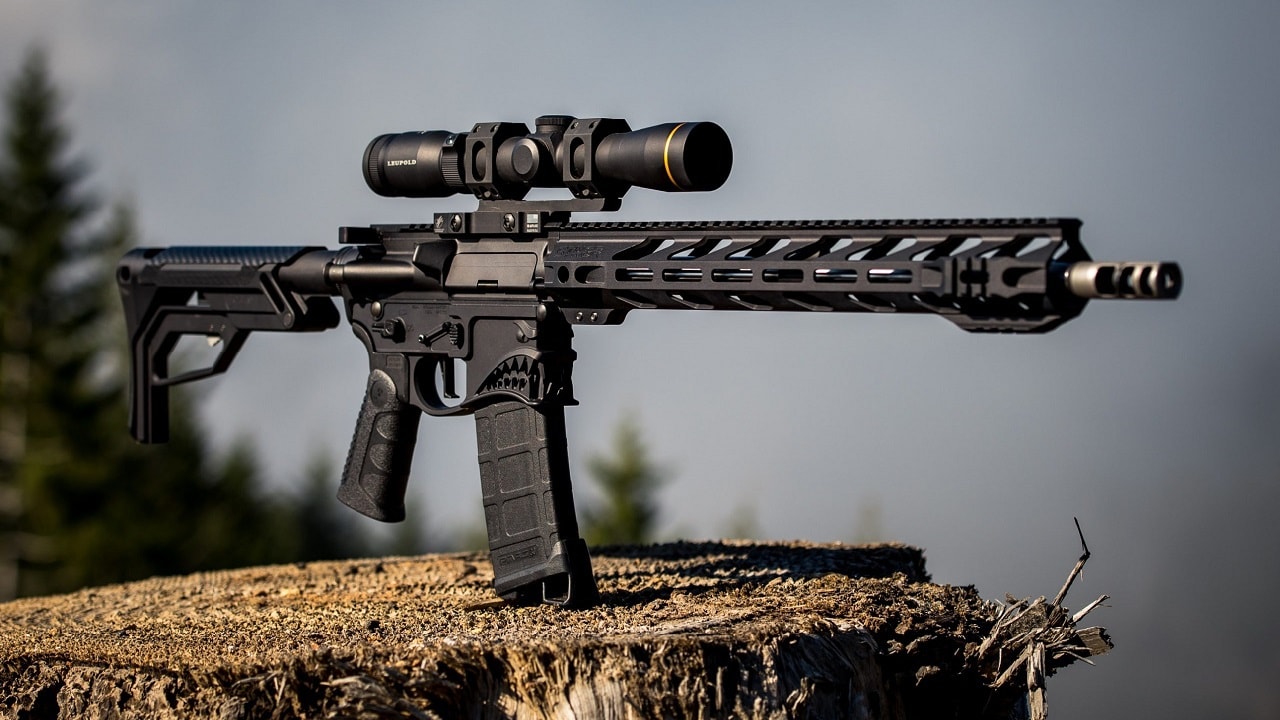The rainy day rifle is one of the most important items to have in your possession when things go bad right up there with medical kits, a decent go-bag, and clean water. The rifle represents an offensive and defensive tool. Whatever the situation is, a barebones rifle isn’t the most optimal thing. It’s definitely not useless, but you’re missing out on its full potential. The absolute essential attachments are a sling, flashlight, and optic. Other optional items would be things like grips and lasers (though I don’t recommend that). There’s a lot of customization and personal preference when it comes to attachments, so I’m just going to give you the fast and easy way to build a fighting rifle.
Slings are one of the most underrated/under-discussed attachments you can get. I would almost recommend that this be the first thing you put on your rifle. Letting your rifle hang while you run or even just walk long distances is so much easier on the body and cardio, plus you can keep your hands free while doing other tasks like rendering aid. There are plenty of options out there, experiment a little. I favor a two-point sling with a quick-adjust strap, but you might like something different. Just make sure you have a hands-free way to carry your rifle.
Next up is a flashlight. These are non-negotiable, they can ensure the safety of yourself as well as people you care about. This is the primary way you’ll be identifying potential threats at night or even during the day in dark buildings. They’re necessary because you can’t shoot what you can’t see. It’s a basic tenet of gun safety, be sure of your target and what’s beyond it. Don’t go cheap on this either. You want a light that’ll have high lumens for a really bright beam and a high candela so you have a bigger area of coverage. You don’t want anything super narrow.
The last of the big three is an optic. This really comes down to preference. The two main things I want to mention are price and magnification. I wouldn’t be too keen to go cheap on an optic chosen for a SHTF rifle that’s potentially going to see action for several years. A lot of cheap optics seem pretty great at first and deteriorate over the years, so make sure you get something high-quality like Aimpoint. I run one of their T2s on my rifle. Also consider magnification, despite media’s best attempt to portray gunfights as adrenaline-filled CQB, it’s a mix of long-distance engagements and some closer fights. Magnification is a must. I don’t care if you go for an LPVO or a red dot with a magnifier, just get what works for you. I like to go with a magnifier since it’s considerably lighter.
I’ll briefly cover some extra attachments too. The only extra attachment I run is a stubby forward grip. There are plenty of attachments out there. You can get bipods, regular lasers (that’s a no-go), grips, and IR lasers. I’d argue that a grip of some sort comes up as one of the more important attachments. You can choose whatever kind you like the best. You can also attach an IR laser, but if you’re already dropping cash on Nightvision, I’m assuming you probably already know everything in this How-To.
Now that I’ve given you the info you need to be prepared and effective, it’s time to train. Frankly, this is the true most important aspect of firearms and preparedness. That rifle means nothing if you can’t use it effectively. Get some range time and when you can’t get range time do dry-fire drills. Always be improving. A combination of everything on this list will get you where you need to go, so get to it!
Richard Douglas writes on firearms, defense, and security issues. He is the founder and editor of Scopes Field, and a columnist at the National Interest, 1945, Daily Caller, and other publications.

